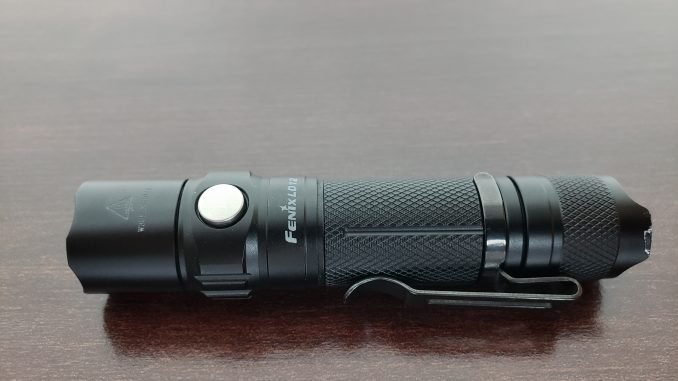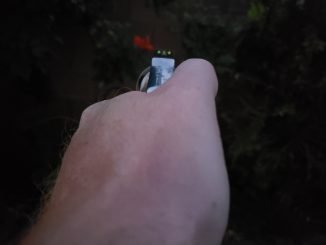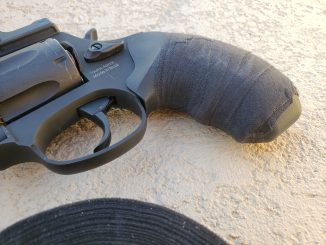
I’m always looking for the next best thing, whether that’s guns, optics, flashlights, and more. For handheld lights I want to squeeze out as much power as I can in my preferred form factor. This continually leads me to new makes and models to see how the competition stacks up. I first learned of the Fenix LD12 after reading Justin’s review over at Swift, Silent Deadly. Being a big fan of his work there and at RevolverGuy, my curiosity was piqued. Shortly thereafter, I had an LD12 of my own.
Form Factor
The Fenix LD12 is a fairly conventional handheld light. Made from anodized aluminum, the light is just slightly smaller in diameter and length than the Streamlight 1L-1AA. The details make this light stand out. Fenix includes fantastic texturing on the body, offering a solid purchase without being rough on the hand. The tailcap is harder to press than my 1L-1AA, cutting down on accidental activation of the light. Just behind the bezel is slightly oblong, allowing the LD12 to be placed down without rolling away.
This slideshow requires JavaScript.
A unidirectional belt clips means the Fenix LD12 must be carried bezel-down if clipped into a pocket. This clip rotates to suit the user’s preference of orientation. In my experience, the clip is very secure. In several months of carry I never lost the light or had the clip become detached. Additionally, the clip never rotated in the pocket, ensuring consistent button placement when drawing the light.
Fenix LD12 Controls
Power and Performance
The Fenix LD12 is capable of using either a AA or 14500 battery, the latter of which provides higher output on the brightest setting. All other settings remain at the same brightness regardless of battery selection.
Output
- Turbo: 150 lumens, 2,500 candela (AA) or 320 lumens, 5,000 candela (14500)
- AA Runtime: 75 minutes to 1.75 hours depending on battery
- 14500 Runtime: 1 hour. Light steps down after 5 minutes, raising run time to 3 hours
- High: 70 lumens
- Runtime: 4.5 hours
- Medium: 30 lumens
- Runtime: 11 hours
- Low: 5 lumens
- Runtime: 2.5 days
The Fenix LD12 can run on both rechargeable and non-rechargeable batteries. There is no way to determine remaining battery life on the fly, though that hasn’t proved to be much of an issue. After several months of carry, the batteries never ran dead, and the included rechargeable batteries can be fed through a simple USB-C.
While I haven’t had the opportunity to use this light in any low-light courses, its familiar controls and comparable output to other offerings suggests it would perform admirably to similarly sized lights.
Fenix lists the LD12 as IP68 rated, making it submersible to roughly 1 meter. I did not test this, but the light was rained and sweated on with no apparent issue.
Durability
The biggest downside of the Fenix LD12 so far has been the durability. Like all of my lights, it hasn’t been abused, but it certainly hasn’t been babied either. There have been a handful of drops from various heights onto asphalt, concrete, and more throughout my workdays. After a few drops, the light no longer reliably turns on. In some cases the LD12 forgets its’ previous brightness setting, or will shut off upon impact. Typically, clicking the tailcap repeatedly will remedy the situation. If this fails, unscrewing and retightening the battery compartment will solve my issues.
This slideshow requires JavaScript.
Final Thoughts on the Fenix LD12
Support My Work
If you made it this far, thanks for reading! Writing isn’t my full-time profession, and nearly everything I do comes out of my own pocket. Between ammunition, tuition, range fees and more, expenses add up fast. If you like what I have to offer, consider making a donation to my Patreon.
Every bit helps bring more work like this to you, and contributes to shortened timelines or more in-depth work on my part. You’ll also have more direct access to me, offering suggestions for future projects, looking behind the scenes, and getting early access to some content. You can find my Patreon >>HERE<<





Be the first to comment